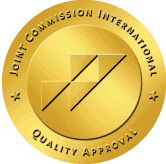You deserve compassionate, effective treatment that addresses your unique needs and helps you reclaim your life from opioid dependency. Whether you’re struggling with prescription painkillers or have watched a loved one battle this addiction, professional help is available in San Diego. With overdose deaths declining by 27% in 2024 due to improved treatment approaches, now is the time to seek the evidence-based care you need.
Start your recovery journey today – Call (833) 530-0291
What are the warning signs of painkiller addiction?
You may be wondering if your painkiller use has crossed into dangerous territory. Recognizing the signs early can save your life and prevent years of struggle. Professional treatment centers understand that painkiller addiction often begins innocently with legitimate prescriptions for pain management.
Physical symptoms you might experience:
- Needing higher doses to achieve the same pain relief
- Experiencing withdrawal symptoms when you try to stop
- Drowsiness or sedation throughout the day
- Constipation that doesn’t improve with typical remedies
- Slowed breathing or feeling short of breath
- Confusion or difficulty concentrating
- Nausea or vomiting, especially when doses are missed
- Constricted pupils even in dim light
- Slurred speech or impaired coordination
- Frequent flu-like symptoms when medication runs low
Behavioral changes that signal addiction:
- Taking medication more frequently than prescribed
- Doctor shopping to obtain multiple prescriptions
- Crushing or breaking pills to intensify effects
- Stealing medication from friends or family members
- Lying about pain levels to get more medication
- Isolating from loved ones and social activities
- Neglecting work, school, or family responsibilities
- Spending excessive money on obtaining pills
- Hiding pill bottles or being secretive about usage
- Becoming defensive when questioned about medication use
Psychological symptoms of painkiller dependency:
- Intense cravings that dominate your thoughts
- Anxiety when medication supply runs low
- Depression that worsens without the drug
- Mood swings ranging from euphoria to irritability
- Panic attacks when unable to access medication
- Loss of interest in previously enjoyed activities
- Difficulty experiencing pleasure without drugs
- Obsessive thoughts about the next dose
- Feeling unable to cope with daily stress
- Suicidal thoughts when facing withdrawal
When does painkiller use become a medical emergency?
Your safety is paramount, and certain situations require immediate medical attention. Treatment centers emphasize that painkiller overdose can be fatal, with synthetic opioids causing over 48,000 deaths in recent years. If you or someone you know experiences these symptoms, call 911 immediately:
Life-threatening overdose symptoms:
- Unconsciousness or inability to wake up
- Extremely slow or stopped breathing
- Blue lips, fingernails, or skin
- Gurgling or choking sounds
- Limp body or inability to move
- Vomiting while unconscious
- Slow or stopped heartbeat
- Cold, clammy skin
- Pinpoint pupils that don’t respond to light
- Seizures or convulsions
Severe withdrawal symptoms requiring medical supervision:
- Uncontrollable vomiting and diarrhea
- Severe dehydration
- Rapid heart rate over 120 beats per minute
- High blood pressure
- Hallucinations or delirium
- Extreme agitation or violence
- Suicidal thoughts or behaviors
- Severe muscle and bone pain
- Uncontrollable shaking or tremors
- High fever above 103°F
How does professional painkiller addiction treatment work?
You need a comprehensive approach that addresses both the physical dependency and the underlying causes of your addiction. Treatment centers in San Diego offer evidence-based programs designed to help you safely withdraw from painkillers and build lasting recovery skills.
Your treatment journey typically includes:
Initial Assessment and Stabilization: When you first arrive, medical professionals conduct a thorough evaluation of your physical health, addiction severity, and mental health needs. This assessment helps create your personalized treatment plan.
Medical Supervision and Support: You’ll receive 24/7 medical monitoring during the critical early stages of recovery. Healthcare providers manage withdrawal symptoms and ensure your safety throughout the process.
Evidence-Based Therapy Approaches: Your treatment includes proven therapeutic methods such as:
- Cognitive Behavioral Therapy (CBT) to change negative thought patterns
- Dialectical Behavior Therapy (DBT) for emotional regulation
- Individual counseling to address personal trauma
- Group therapy for peer support and connection
- Family therapy to rebuild relationships
- Trauma-informed care for underlying issues
- Mindfulness and stress reduction techniques
- Relapse prevention planning
- Life skills training
- Vocational counseling when appropriate
Why is medication-assisted treatment effective for painkiller addiction?
You deserve access to the most effective treatments available, and research shows medication-assisted treatment (MAT) achieves 60-90% success rates for opioid addiction. Treatment centers combine FDA-approved medications with counseling to address both physical dependency and behavioral aspects of addiction.
Benefits of medication-assisted treatment:
- Reduces cravings and withdrawal symptoms
- Prevents relapse more effectively than counseling alone
- Allows you to focus on therapy and life rebuilding
- Decreases risk of overdose
- Improves treatment retention rates
- Helps normalize brain chemistry
- Reduces illegal drug use
- Improves social functioning
- Increases employment opportunities
- Enhances overall quality of life
Common medications used in treatment:
Buprenorphine: partial opioid agonist reduces cravings without producing euphoria. You’ll experience fewer withdrawal symptoms and lower overdose risk while your brain heals from addiction.
Naltrexone: This medication blocks opioid receptors, preventing any high if you use painkillers. Available as a monthly injection, naltrexone helps maintain abstinence after initial withdrawal.
Methadone: Used in specialized clinics, methadone provides long-acting opioid replacement to stabilize your system while you engage in comprehensive treatment.
What makes San Diego treatment centers effective?
You benefit from San Diego’s unique combination of evidence-based treatment approaches, experienced professionals, and supportive recovery community. Treatment centers here understand the specific challenges facing Southern California residents and tailor programs accordingly.
Key factors in successful treatment:
- Licensed medical professionals specializing in addiction medicine
- Certified addiction counselors with extensive experience
- Evidence-based treatment protocols proven effective
- Comprehensive dual diagnosis treatment for co-occurring disorders
- Strong aftercare planning and alumni support
- Connection to local recovery resources
- Insurance acceptance and payment options
- Culturally sensitive treatment approaches
- Integration of holistic healing methods
- Focus on long-term recovery success
Treatment philosophy that works:
Professional treatment centers recognize that addiction affects every aspect of your life. Effective programs address physical health, mental wellness, relationships, spirituality, and life purpose. You’ll work with a multidisciplinary team including doctors, therapists, nutritionists, and peer support specialists who coordinate your care.
How long does painkiller addiction recovery take?
Your recovery timeline is unique, but understanding typical progression helps set realistic expectations. Treatment centers emphasize that recovery is a process, not a destination, requiring ongoing commitment and support.
Typical recovery milestones:
First 7-10 days: Acute withdrawal: You’ll experience the most intense physical symptoms as your body adjusts to functioning without opioids. Medical support ensures your safety and comfort during this challenging phase.
Weeks 2-4: Stabilization: Physical symptoms improve significantly, and you’ll begin engaging more fully in therapy. Your energy returns, sleep improves, and hope for recovery strengthens.
Months 1-3: Active treatment: You’ll develop coping skills, address underlying issues, and build a recovery foundation. This period involves intensive therapy work and lifestyle changes.
Months 3-6: Early recovery: You’ll practice new skills in real-world situations while maintaining treatment support. Many people step down from PHP to IOP during this phase.
Months 6-12: Sustained recovery: You’ll strengthen your recovery program, rebuild relationships, and pursue life goals. Ongoing outpatient support helps navigate challenges.
Year 2 and beyond: Long-term recovery: You’ll continue growing in recovery while helping others on their journey. Many successful recoveries involve ongoing participation in support groups and periodic therapy.
Contact Assure Recovery
Don’t wait another day to begin your recovery from painkiller addiction. Help is available now, and you deserve the chance to reclaim your life from opioid dependency. Assure Recovery offers comprehensive treatment programs designed to meet you wherever you are in your recovery journey.
You don’t have to face painkiller addiction alone. Professional help, proven treatment methods, and a supportive recovery community await you in San Diego. Your journey to freedom from addiction starts with one phone call. Contact Assure Recovery now and discover how good life can be without painkillers controlling your every decision.



